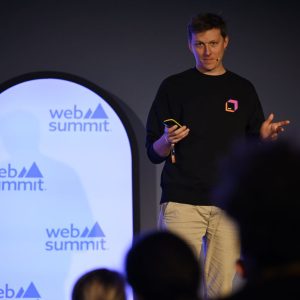Morgan Stanley & Co Inc technology investment analysts have been casting their eyes over trends in IT. We bring you some of their observations and conclusions.
It’s big on these resource planning stocks. Morgan Stanley thinks real-time supply chain solutions, with their emphasis on time and distribution, present an opportunity at least as big as traditional MRP manufacturing and ERP enterprise resource planning markets. The drivers are pushing delivery times to hours rather than weeks; reduced forecasting and planning lay-offs throughout the chain; migration from electronic data interchange to internet commerce; batch data to event driven messaging; integrated customer care and information; self help extranets and intranets; and mass customization of data via warehouses. In its view MRP materials management is a $2bn market; MRP II delivering more efficient production is $4bn, ERP is $6bn and RTSC is $12bn. We assume they’re banging on about the SAP, Baan and PeopleSofts of the world.
Overtaken
The bank thinks that to control the implementation of increasingly chaotic client/server systems and bring distributed systems back under the administrative control of IT departments, organizations will increasingly look to replace mainframe-centric data centers with what it’s calling single-image, enterprise systems operations centers. As a result, IT spending will be more evenly spread across hardware, software and personnel resources and more buy over build decisions are made. Hardware is typically 45% of IT spending now, Morgan Stanley thinks, software 15%, personnel 25% and other 10%. It’s moving to 30%, 30%, 30% and 10% respectively, it thinks. Messaging, in the form of Corba and DCOM will overthrow hardwire plumbing and bridge legacy applications within these new environments. Moreover Morgan Stanley thinks these trends will eventually spell the end of traditional client/server environments. Just as the mainframe world – characterized as it was by centralized operations, menu-driven activity, terminals, Cobol and control by IS – was replaced by multi-tier, event-driven, PC/GUI, 4GLs and end-user driven client/server models, client/server itself will be overtaken by network models which offer distributed and location independent services, dynamic publish and subscribe delivery, Java-aware multimedia browsers, Java and business rules-driven applications; and infrastructures supported by partnerships and service-level agreements. The impact, it thinks, will result in more servers being sold – though ‘synthetic servers’ rather than ‘fat servers’ according to its terminology – use of self managing/healing ‘Black Box’ servers; the rise of systems management; and increased use of bandwidth driving the adoption of networking products. It feels these pressures will rally the anti-Microsoft camp and achieve the interoperability that eluded Unix. It also promises easier integration of legacy systems; Windows/NT on application servers; Unix on the database server; transaction management outside of the database; and heterogeneous databases .
Storage opportunity
Windows/NT momentum will continue, but not at the same rate, it thinks. LAN Manager, Banyan and OS/2 replacements will be mopped up; Active Directory will attacks Novell’s last stand; Java will evolve beyond the hype-cycle, while Unix gets stronger at the high-end. Clustering APIs emerge and Corba and Java form operating system-independent platforms. Specifically the lack of 64-bit NT and NT clustering will slow NT momentum until the 1998- 1999 timeframe. The network service model makes less operating system choice less relevant. Windows NT gets the applications server business; Unix gets the database… Electronic commerce will be the Web’s killer application, complexity will be the downfall of the PC, and server vendors will come under increasing margin pressure. Indeed storage, the bank thinks, may present an even better opportunity to make money than servers. There’s a shrinking $4bn mainframe storage market and a $4bn open
storage market growing at between 30% and 60% a year. And, it believes, two thirds of users now separate their storage and CPU engine procurement. Magnetic technology is king – optical is infant – and it’s touting EMC, Data General, Seagate and Sun as the key protagonists in this space. For good measure, Morgan Stanley surveyed its corporate buyers and asked is your commitment to Unix increasing or decreasing? 65% of respondents said increasing, 20% decreasing while 15% said no change.






